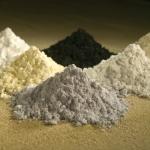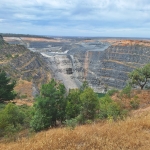UK: BP's BTC pipeline needs extra monitoring-US agency
Extra monitoring is needed on BP PLC's (BP) Baku-Tbilisi-Ceyhan pipeline, particularly on cracks and leakages in its coating, the U.S. Overseas Private Investment Corporation, or OPIC, said in a report.
The document from the agency's internal watchdog, the accountability office, was leaked Monday by environmental groups Green Alternatives, Pacific Environment and Platform and follows a new assessment of the project's risk.
The U.S. government credit agency looked into its decision to back the pipeline following a complaint from non-governmental organizations about a $142 million political insurance policy it granted on loans to finance the BTC Transcaucasian pipeline.
The subsequent review, completed on Jan. 29, recommends that "OPIC renew its focus on environmental monitoring of the project in the medium to long term."
It also asks for "specific attention to implementation of the additional monitoring for field joint coating cracks or leakage."
An OPIC spokesman didn't return a request for comment.
The BP-operated pipeline transports crude over 1,750 kilometers from the Caspian to the Mediterranean Sea and started operating in July 2006.
The report comes as the U.K. oil major is reeling from a string of problems at its U.S. operations, including a government probe into heavy corrosion and a small leak in its Alaska pipeline.
The assessment deals only with OPIC's compliance with its own policies of environmental risk mitigation, and isn't binding for other parties such as BP.
OPIC decided in May to address grievances from NGOs alleging that OPIC wasn't properly informed about issues regarding the coating material used for BTC's pipes. This marked the first time the agency had agreed to review a complaint on a project it has backed.
The NGOs said the pipeline operator didn't inform OPIC, before it took its decision, about a BTC consultant report claiming the coating used was likely to result in widespread oil leakage. The accusations relating to corrosion risks, which the company denies, first surfaced in press reports on Feb. 15, 2004.
The U.S. agency's watchdog concludes that "although pipeline construction commenced during due diligence, OPIC did not access all construction monitoring data that could be material to due diligence."
The document shows that the company didn't disclose information about cracks in the anti-corrosion coating pipeline - discovered in November 2003 - until after the insurance contract came into force on Feb. 3, 2004.
A BP spokesperson said it had received the OPIC report and that the report "acknowledges BTC's extensive and comprehensive reporting to the lenders throughout the construction of the pipeline."
According to the OPIC report, consultants assessing the project for the lenders during its construction also voiced concerns about "the compatibility of the selected (field joint coating) material and the pipe coating."
It says they questioned BTC about whether it could be difficult to maintain pipeline-coating integrity for the design life of the project and that repair would likely be required and extra monitoring would be appropriate in sensitive areas.
A consultant for the lenders also recommended that coating conditions in high-groundwater areas be monitored and inspected at more frequent intervals than BP planned.
The BP spokesman said: "Based upon our initial review of the report, we are confident that our extensive ongoing monitoring and assurance program for BTC addresses the recommendations made to BP during the construction process. We will work closely with OPIC to clarify any actions that are required of BP in the future."
- 107 Energy



